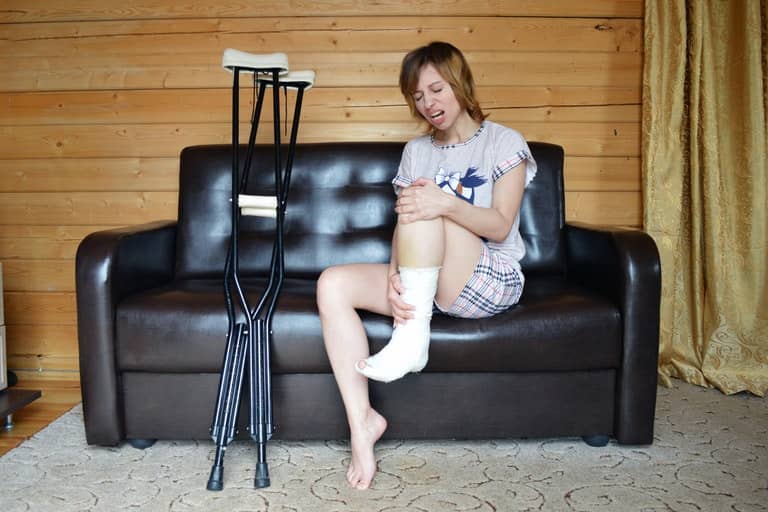
How Is Pain And Suffering Calculated In A West Virginia Personal Injury Case
When someone suffers an injury due to another party’s negligent or deliberate action, they have the right to file a personal injury claim. Whether this claim is resolved through the responsible party’s insurance company depends on how negotiations work out with the insurer. When these negotiations break down, there may be a necessity for the victim to file a personal injury lawsuit. This is when it is best to get an accident injury attorney involved in the case. How is pain and suffering calculated in a personal injury case?
Types of Pain and Suffering
Pain and suffering is a broad term that defines an injury’s impact on a victim’s life. Some forms of pain and suffering include:
- Physical pain from the injury
- Emotional and mental suffering because of the injury
- Loss of quality of life
- Damage to reputation
These are not all the forms of pain and suffering which may be claimed when filing a personal injury claim or lawsuit. A personal injury lawyer can help victims understand the areas where they may be able to claim pain and suffering damages.
How Pain and Suffering Impacts Personal Injury Cases
West Virginia Code §55-7B-8(b) limits the amount a victim can claim for pain and suffering. In nearly all cases, this amount is limited to $500,000. The more catastrophic the injury, the more likely the victim, is to see an award of this size.
Methods for Proving Pain and Suffering
For victims to include pain and suffering as part of their claim, they need to prove that their injury caused them to suffer unduly. Some of the methods for doing this include:
- Medical record review — a review of the victim’s medical records will show whether the accident resulted in a need for hospitalization, surgery, additional tests which would have otherwise been unnecessary, and pain medications that may have been prescribed to minimize pain while recovering.
- Expert testimony from medical professionals — whether a victim saw a physical therapist, a chiropractor, or other medical professionals, they can provide testimony regarding the victim’s physical and mental health.
- Victim testimony about the impact of injury — 0ne of the most powerful methods of demonstrating pain and suffering is the victim’s own words. The victim will be the person who can best discuss the impact an injury has had on their life.
- Friends and family observation — a victim’s friends and family can also testify about the changes they have noted since an injury occurred. This includes the victim’s desire to participate in activities, their mental state, and any new physical limitations resulting from their injury.
Victims of an accident which resulted in an injury should discuss what methods are best in their specific circumstances. Depending on the severity of an injury, it may be helpful to have multiple parties submit their testimony on behalf of the victim.
Various Methods of Calculating Pain and Suffering
Calculating pain and suffering tend to be subjective. This is because there are no actual monetary calculations that provide information about what dollar value someone’s pain has. Insurers, judges, and juries all have different methods of calculating pain and suffering.
When an insurance company is calculating pain and suffering, they tend to use software. This process takes the human element out of the equation. Insurers believe that taking any human element out of the calculation means a fairer calculation. This may or may not be the case.
When a case is handled via negotiations with insurance companies, the victim’s lawyer may make a case for larger pain and suffering settlement based on the extent of the injury a victim suffered, the long-term pain they may suffer, and how the injury will impact them in the future.
Sometimes a lawyer will use a calculation that is more accepted by the courts. The primary method is based on the amount of money a person is awarded in a settlement with an insurer or because of mediation or arbitration. This method assesses pain and suffering as a settlement percentage and uses a multiplier. The multiplier is calculated based on the severity of the injury. A serious injury could mean the pain and suffering damages are multiplied by five.
The final method that may be used is the per diem method. Per diem is simply a daily assessment of pain and suffering. This method would result in the pain and suffering portion of a claim to be multiplied by the number of days the injury was causing pain or the number of days before the victim could return to their normal activities. This would also require a calculation of what the daily rate of compensation. The daily rate of compensation would typically be assessed depending on the severity of an injury.
Hiring a Lawyer to Assist with WV Personal Injury Cases
When someone has suffered an injury due to another party’s negligent action or inaction, most victims do not think about how pain and suffering are calculated. They are more interested in ensuring their family does not suffer financially due to their injury.
When a victim contacts a personal injury attorney to help them with their claim, there is a better chance they will get the best possible results. Remember, insurance companies are aware that most people do not fully understand the law, and they will use that lack of understanding to pay as little as possible out on a claim.

